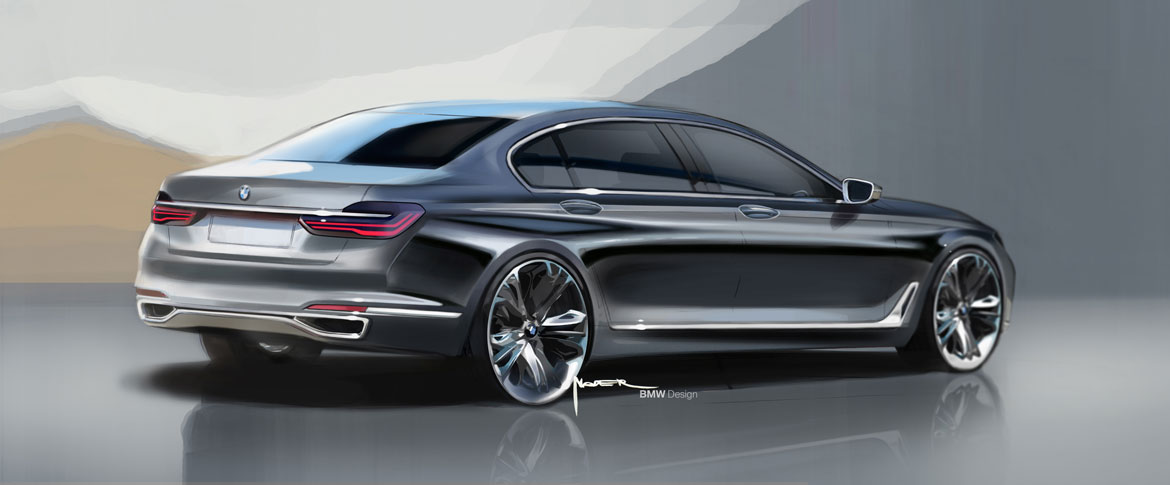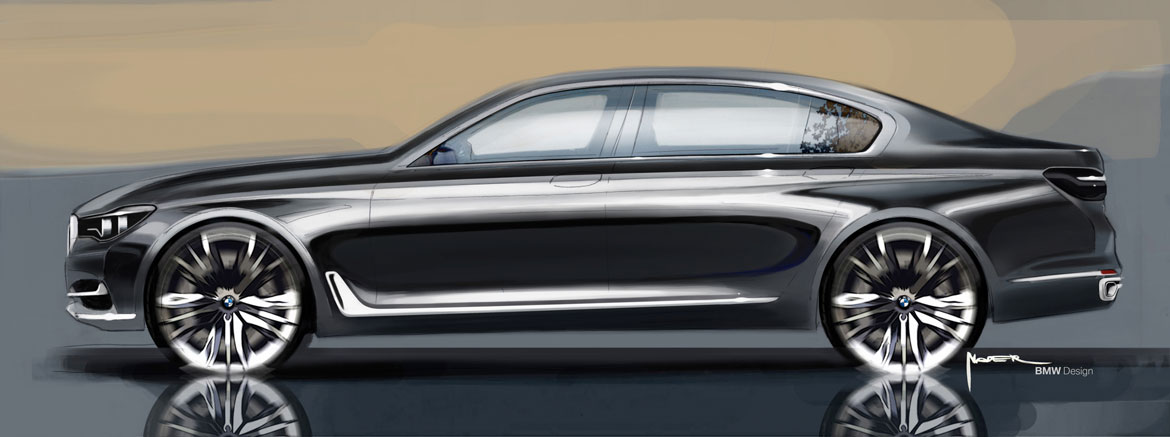Waiting for the announcement of the Car of the Year 2016 winner on February 29 at the Geneva Motor Show, we recall here the design story of the BMW 7- Series available on issue no. 216 now on newsstand.

INTERACTIVE LUXURY
“Our flagship”, says Adrian van Hooydonk, “is a special challenge because we always have to surprise our customers in some way, offer them more than they expected. In the present case, the idea was to create modern luxury based on the most advanced technologies and painstaking attention to detail”. According to the BMW Group design chief, the new generation 7 Series is therefore “the most luxurious, most comfortable and overall the most perfect car we have ever built in this class”.

But how do we distinguish the concept of “modern luxury” from that of “traditional luxury”? For the Bavarian manufacturer’s designers it was a question of combining the classical (wood, leather, finish) with new elements which, in the words of Van Hooydonk, “make the car smarter”, namely advanced technology, increasingly sophisticated finish and, above all, a new way of interacting with the car. To be clear, the concept of “precision and poetry”, already a feature of BMW design, is now, Karim Habib, brand design head, assures us, “taken to the highest level of poetry, namely that of the human touch, sensuality”. In the words of BMW marketing, the new 7 Series proposes “a modern, innovative interpretation of an exclusive, luxury driving experience”.

Upon attentive examination, the car reveals balanced proportions, an athletic but harmonious surface design, the presence of style and sophisticated dynamism, while the interiors stand out for their generous roominess accentuated by the horizontal configuration of lines and surfaces and the use of noble materials. Factors like the skilfully disguised technological content (abundant use of carbon fibre which lightens the car by 150 kg), or the introduction, among numerous other innovations, of that “gesture control” whereby a mere movement of the hand is enough to increase or reduce the audio, answer the phone or reject a call, all contribute to “modern luxury”; or again the introduction of various set-ups that transform the flagship from a sports car (there is a wide choice of 8- and 6-cylinder engines, as well as a plug-in hybrid unit) to a widely personalisable luxury lounge.

“Luxury”, Van Hooydonk explains, “is viewed differently in different countries”. When the project was launched in 2011, this generated the idea of unleashing a group of designers in various parts of the world, from California to Abu Dhabi, from Shanghai to Europe, in pursuit of new concepts of luxury, especially outside the automotive sphere (hotels, restaurants, stores): “Then there was the usual competition among our design centres. The proposal created in Shanghai by a designer who usually works out of Munich, Nader Faghihzadeh, won the day as far as the externals were concerned, while the interiors were developed by Robert Lichnovsky in our central studio”. The rest is history: 4 models (one of them done in California) on 1:1 scale, until the hoped for result was achieved: “A vehicle recognisable as a 7 Series”, suggests Habib, “but with leading-edge styling solutions”.











